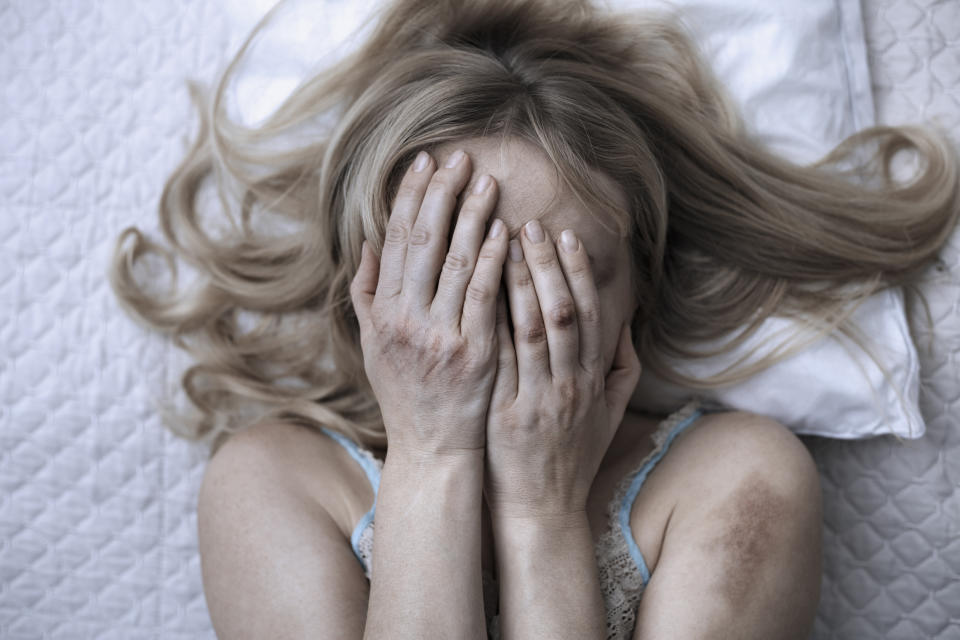Why are family violence services losing government support?

Domestic violence in Australia, and indeed globally, is a growing issue.
According to the latest data, one-in-six women have experienced physical or sexual violence by a current or previous partner since the age of 15.
That number increases to one-in-four when it comes to women who have experienced emotional abuse by a current or previous partner since that age.
This begs the question: why are legal and community centres experiencing funding cuts when women, more than ever, need to seek refuge from abusive partners and need support?
Also read: The demeaning truth of what it means to be poor in Australia
Also read: What will it take to fix homelessness in Australia?
Also read: White Ribbon goes into liquidation
In June this year, the NSW government ceased funding for the Women’s Family Law Support Service – a service which lawyers described as a “safe space” for women to find out information about the court process, and make security arrangements.
Programs within legal centres, like the Care Partner program, also saw their funding cut by Legal Aid NSW.
The government’s National Plan to Reduce Violence against Women and their Children ends in 2022, and there’s nothing to suggest what’s next, Chloe Fragos, solicitor and project officer at the Womens’ Legal Service SA (WLSSA) told Yahoo Finance.
“Even though our current statistics are increasing - meaning these issues aren’t going away. So we are a bit nervous about what to from here,” she said.
And in general, Fragos said there’s a bit of a “shift away” from recognising specialised womens’ services, and more of a focus on mainstream services, which is concerning.
“It feels like we’re sort of going backwards, not forwards,” Fragos said.
“In the 80s, there was a lot of focus on needing women-specific services, which is women Women’s Legal was set up in 1995. But the conversation is starting to be non-gendered, and just about social services in general. That is something we’re concerned about.”
It doesn't make sense, given the cost savings to the community for the work these services provide.
The annual cost of violence per woman to the South Australia is $21,648, and the lifetime cost for victims in 2014-15 was estimated at $307 billion nationwide.
In the 2017-18 financial year, the cost savings to the community for the work the WLSSA did was $37,667,520.
And the cuts don't match with the rising demand for the services.
Fragos said in the 2018-19 financial year, 2,880 women sought legal help from the centre, with 3,832 advices given.
Of those, 71 per cent were survivors of domestic or family violence, 64 per cent were women who had an income of up to $26,000 and 24 per cent were at risk of homelessness.
How is funding distributed for women’s services?
Most community legal centres receive their funding from both the federal and state governments, although the amounts they receive vary.
Some community legal centres receive their funds solely from the Commonwealth or, like the WLSSA, receive funds predominantly from the Commonwealth, but still remain somewhat supported by state governments.
The money received from the governments is funnelled through the National Partnership Agreement on Legal Assistance Services (NPA).
But the distribution process can be tense, Fragos said.
“From a South Australian context, we’re small in population but not small in legal needs. So, it does become quite competitive in terms of who gets what for what value, and that often means things can get quite political.
“We’re a service that is required to do the whole of the state, yet we get less funding than services that are just funded to do a small geographic area."
In NSW, the state government has committed state community legal centre funding to June 2022, and collectively, they receive around $12 million per year from the Commonwealth and $14 million per year from the NSW government.
But the majority of this funding goes straight towards employee salaries, which means when funding is cut, jobs are cut.
Fragos said the WLSSA’s total income for the 2018-19 financial year was $1.56 million, and salaries cost $1.154 million.
“We have 19 staff, and most of them are solicitors,” she said.
“If funding cuts were to happen, it would mean less solicitors and less opportunity for women to access the service.”
Where are services turning for alternative funds?
With limited funding, there’s been a push for services to rely on corporate sponsorships and fundraising initiatives, Fragos said.
“There’s been a bit of a shift in how these services are keeping afloat,” Fragos said, but in small cities like Adelaide, it doesn’t often translate into big dollars.
White Ribbon closes doors
In October this year, domestic violence charity White Ribbon, which reaped much of the donations to anti-domestic violence causes, went into liquidation, citing concerns over “future sustainability”.
But while on the surface it seemed as if another womens’ support service bit the dust, many anti-domestic violence campaigners welcomed the news via Twitter.
The charity copped backlash for removing a statement on its site which showed support for womens’ reproductive rights, and many felt the charity was not transparent with who its stakeholders were.
Other activists also claimed the charity rewarded men for "surface level behaviour" and "shallow actions".
“Worse than not having a positive impact itself White Ribbon took attention from groups and organisations who do the things that work, gave men cookies for doing nothing useful at best and being sexist perpetrators or misogynists at worst,” one Twitter user wrote.
Make your money work with Yahoo Finance’s daily newsletter. Sign up here and stay on top of the latest money, news and tech news.

 Yahoo Finance
Yahoo Finance 